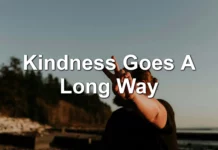If you took an honest look at the pace that you’re currently living at, could you do it forever? Would you want to?
For most people, the answer is no.
Fifteen years ago, I thought the answer to that question was yes. I thought I’d never burn out regardless of the pace at which I worked and lived. My formula for growth was as simple as it was stupid: more growth equals more hours. That formula left me overwhelmed, overcommitted, and overworked.
Eventually, life gave me one of the rudest awakenings I’ve ever experienced: I burned out. After a decade in leadership leading a fast-growing nonprofit, I hit a wall. It’s like my body went on strike and said “we’re just not going to do this anymore”. As I learned the hard way, when you’re perpetually overwhelmed, if you don’t declare a finish line, your body will.
Global crisis notwithstanding, you can tell yourself it’s a busy season, but if your busy season has no end, it’s not a season—it’s your life.
I worked hard on my recovery from burnout and started approaching the three assets we each manage every day—time, energy, and priorities—very differently.
The result? For me and for thousands of other leaders I’ve trained over the last few years: the principles in At Your Best resulted in learning how to live in a way today that will help you thrive tomorrow.
In this post, I cover five big ideas (and ‘aha moments’) that helped me move from a state of constant time famine to a place where I finally freed up the time to do what really matters, whether that’s writing books, hosting a podcast, having a weekly date night with my wife where I’m fully present, or getting a good night’s sleep and never feeling guilty.
In other words, these insights helped move me to a place where I started living in a way every day that set me up to thrive tomorrow.
The insights are pulled from my brand new book, At Your Best: How to Get Time, Energy and Priorities Working In Your Favor, which was released yesterday. For just a few more days, you can get the 7 sessions At Your Best video Masterclass free when you order. Here’s how.
I hope the insights in this post (and the book) help you too.
1. You Actually Have The Time
Before my burnout, I’d regularly claim I didn’t have time to do things.
Audit your own speech and the words of people around you and you might hear phrases like:
- Sorry—I just don’t have the time.
- I didn’t have a chance to get it done.
- I wasn’t able to finish it.
Do you hear what these statements have in common? They’re not entirely true.
I could have, I just didn’t.
I had the time, I just didn’t take it.
One day I realized the most productive people on Earth get the same amount of time you and I get. This also means that some people are staggeringly great at handling time.
What do you wish you had time to do? Work out? Write a book? Start a podcast? Tuck your kids into bed at night?
Well, you have the time for that. So do I.
When it comes to time, you and I are rich. In fact, we’re loaded. Time doesn’t discriminate. With the exception of the day you’re born and the day you die, everyone gets the same 24 hours every day.
So what’s your dream? You have the same amount of time as anyone else to realize it.
2. Cooperating With Your Energy Levels Produces Far Greater Results Than Competing With Them
Time management is one thing. Energy management is quite another—something most people don’t think about.
I’m guessing you’ve noticed this: even though you have twenty-four equal hours in the day, not all hours feel equal or produce equally.
You’re wide awake for the 10:00 a.m. meeting, but at 2:30 in the afternoon you’ve got toothpicks wedged in your eyelids to stay alert for a Zoom meeting and you’re fidgeting and jiggling your leg to stay focused. You sprint through some hours but drag yourself through others.
Underneath that is a truth most of us would rather deny: most of us have only three to five deeply productive hours in a day when our energy is at its peak. That’s it.
Experts agree that our peak hours are far more limited than we realize or even like to admit. It has nothing to do with IQ or hustle and everything to do with the fact that we’re human. We just can’t work at peak all day long.
Let’s call your peak hours your Green Zone. While everyone is different, my Green Zone happens between 7-11 a.m. most days. Yours might happen in the afternoon or evening, but you’ve got 3-5 peak hours somewhere.
The rest of the day can be divided into Yellow and Red Zones. Your Red Zone happens when your energy level is at its lowest and you struggle to focus and get anything done. And your Yellow Zone is everything else…your energy is mid-level, not terrible but also not at your best.
So what do you do with this reality? Rather than competing with your energy level as it waxes and wanes over the day, cooperate with it.
Protect your Green Zone by doing your most important work and top priorities then.
What about your Yellow and Red Zones?
Do your moderately important tasks in your Yellow Zone when you have a moderate amount of energy, and the least important tasks in your Red Zone when you have the least amount of energy. Or, in your Red Zone, call it a day and go for a run or take a nap. You’ll be glad you did.
Cooperating with your energy levels produces far greater productivity than competing with them.
3. You’re Most Likely To Neglect Your Most Important Work
What’s the most significant work you can do—your talent, your superpower…the thing you do that most moves the needle at work and in life?
Well, strange news. The more naturally skilled you are at something, the easier it is to spend less time on it, not more.
Far too often in my life, I’ve done just that. I whipped something together because I got overwhelmed with so many other things. I threw a talk together in a quarter of the time I should have taken to do it well. And often nobody noticed. That’s a terrible way to steward a gift. It’s also a really bad long-term strategy if you want to fully develop your talent.
I call that cheating your gift. You cheat your gift when you use your gift but never take the time to develop it.
Spending thirty to sixty minutes of your peak Green Zone each day reading, studying, and honing your skills can make an astonishing difference. Like compound interest, the real benefits of small investments in your skillset show up years down the road.
Use your Green Zone to develop your talent, not just use it.
4. No One Else Will Ever Ask You To Accomplish Your Top Priorities
It’s easy to spend all day at work and accomplish nothing you set out to do.
If you look at it honestly, the “oh my goodness, what happened to my day?” phenomenon we experience is not really a mystery. You simply spent your day reacting to everything that came your way.
It’s easy to blame everyone and everything else for a lack of productivity. But these days, I remind myself that everyone who calls, texts, knocks on my door, and asks me for things is just doing what every human being does: trying to move his or her priorities onto my agenda.
That’s just the way life works.
Nobody will ever ask you to accomplish your top priorities. They will only ask you to accomplish theirs.
One hundred percent of a workday or day off can be used up helping other people accomplish their priorities while yours sit unattended.
So, find your biggest priorities, and dedicate undistracted time in your Green Zone to accomplishing them.
5. The Wrong People Always Want Your Time. The Right People Rarely Ask For It.
People tend to be the greatest opportunity and the greatest obstacle we face.
Notice this? The wrong people always want your time. The right people rarely ask for it.
The people who want your time are rarely the people who should have your time. And the people who should get most of your premium time (think best team members, top clients, your spouse, your kids) may not ask you for it.
As a result, many of us spend much of our time with the people who drain us, leaving us feeling drained. Meanwhile, the people who energize us rarely get enough of our attention.
At work, most leaders spend time with their underperformers: the employee who’s always late to work or the salesperson who isn’t closing many deals. In our personal lives, it’s easy to spend a lot of our time with drama kings and queens, chronic complainers, or with the person who’s always in crisis but doesn’t want to get better. What ties together these kinds of people, says Psychologist John Townsend, is that they have a flat learning curve.
They’re not being helped by your interaction, and neither are you. As a result, so many people have nothing left to give because they’ve given it all away to people who, honestly, weren’t helped by the interaction.
So…what if you flipped it?
What if—instead of spending 80% of your relational time with chronic underperformers or struggling people who never seem to improve—you spent 80% of your people-time with your top performers and the people closest to you?
That changes so much. First, your top and closest people will be so glad you did. Second, you’ll be energized when you spend time with them, as will they. Plus your best people will often lean in harder and produce better results after you spend time with them. Plus, you’ve released the chronic strugglers to people who can better help them.
Invest in your best. The right people, after all, rarely ask for your time. So ask them. You’ll both value it.
Ready To Find A Sustainable Pace? Here’s How.
The problem so many leaders face today is an inability to find a sustainable pace.
That’s why I wrote my new book, At Your Best: How to Get Time, Energy, and Priorities Working in Your Favor. After I burned out, I developed a strategy that got time, energy, and priorities working for me, allowing me to accomplish far more in far less time.
I’ve since trained thousands of leaders around the world in the At Your Best strategy that’s helped lift them out of stress to finally do what they want to do—grow their organizations, advance their careers, launch new ventures, be far more present at home, and take regular time off.
You can order the book here and get a free Masterclass—but there are only a few more days until the Masterclass disappears as a free bonus. More details below.
Stress Less & Achieve More With At Your Best (New Book).

Whether you’re overwhelmed, overworked or overcommitted, At Your Best is the strategy to get your time, energy and priorities working in your favor.
Thousands of leaders around the world have been trained in the At Your Best strategy that’s helped lift them out of the stress spiral to finally do what they want to do—grow their organizations, advance their careers, launch new ventures, be far more present at home, and take regular time off.
Order your copy of At Your Best today.
What Do You See?
What gets in the way of a sustainable pace for you?
Scroll down and leave a comment!







